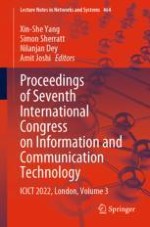2023 | OriginalPaper | Chapter
Effective Biometric Technology Used with Big Data
Authors : Abdulrahman S. Alenizi, Khamis A. Al-Karawi
Published in: Proceedings of Seventh International Congress on Information and Communication Technology
Publisher: Springer Nature Singapore
Activate our intelligent search to find suitable subject content or patents.
Select sections of text to find matching patents with Artificial Intelligence. powered by
Select sections of text to find additional relevant content using AI-assisted search. powered by
